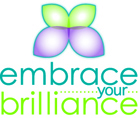Coaching vs. Counseling

Coaching is about moving you forward, from where you are in your life to where you want to be, toward your desired outcome. “Why” typically keeps us disempowered and in the past.
Conventional Therapy –
|
Personal Coaching –
|
| Personal strengthening | Personal evolution |
| Exploring and discovering the client | Empowering the client |
| Triage – Where does it hurt, what’s happening? | Visioning – what’s possible, creating dreams/goals |
| Why is this happening to me? Why this? | What’s next? What now? How can I? |
| Overcoming obstacles | Sustaining a flow – obstacles are new opportunities |
| Operating from an unconscious-conscious level | Operating from a conscious-consciousness level |
| Moving away from | Moving toward |
| Looking backward | Being present NOW, focusing forward |
| Cognitive behavior problems examined | Actively challenging and building new behavior |
| Needs help – fix me, I am broken/dysfunctional | Wants to partner with coach for transformation |
| Stuck in pain – don’t know what to do | Frustrated by obstacles –&unresolved conflicts/limits |
| Focus: Past-present | Focus: Present-future |
| Focus: Issue resolution | Focus: Life design – on-purpose life – intentional |
| Driven by unresolved experiences | Choosing new behaviors, goals and actions |
| Takes information in | Acts on information received |
| Discussion-oriented, feelings-based | Action oriented, possibility-based |
| Focused on self & past understanding | Focused on NOW and reaching self-potential |
| Therapist: Nurturing, supportive, telling | Coach: Catalyzing, challenging, asking |
| Asks why? (why keeps us in the past) | Asks what? (what is now possible, what can I do?) |
| Usually a slower, measured, methodical pace | Often an accelerated pace – results oriented |
| Relationship: Patient-client | Relationship: Coach-Client |
| Medical model | Performance model |
| Treatment | Possibility Co-creation |
| Healing | Achievement – desired outcomes (healing may occur) |
| Four Basic Questions to Ask the Client: 1. What are you moving towards?2. What is motivating you to change?3. What are some of the possibilities in getting there?
4. What if you get a different result? |
©2011, Rhonda Robbins, all rights reserved.
Comments
Leave a Reply
You must be logged in to post a comment.
Be the first to comment.